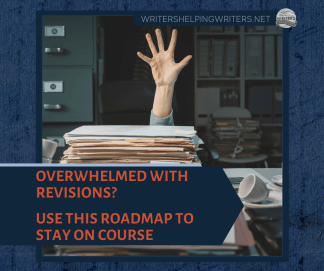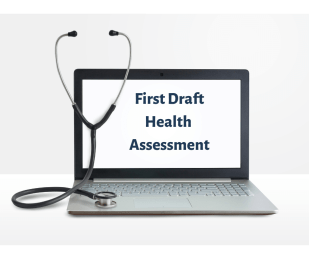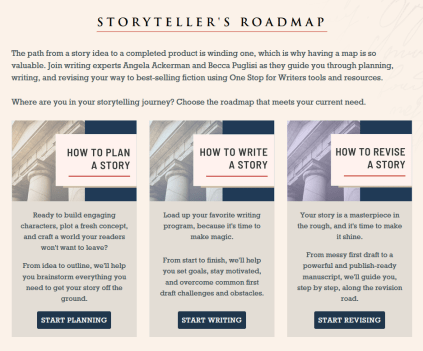Overwhelmed with Revisions? Use This Roadmap to Stay On Course.

Is there a better feeling in the world than finishing a manuscript? Typing The End, gazing lovingly at the overall word count, and recognizing you���ve accomplished something that not many people can do���you���re floating on cloud nine, and all is right with the world.
And then come the revisions.
Hear that sound? That���s you, crashing to the ground.
Revision isn���t typically super fun because it requires you to look at your story���your perfect, incredible, one-of-a-kind story���realistically. You���re going to find problems���BIG problems���that need fixing. You���ll have to take a scalpel, machete, or jackhammer to your baby and carve out some of those words you were so proud of coming up with. It���s hard. Writers aren���t typically excited about this part of the journey.
But I would encourage you to look at it differently. Revision is how your story goes from good (or garbage) to great. Characters become more authentic and well-rounded, plotlines are streamlined, settings become multi-dimensional, pace-killing fluff and filler are eradicated, and your voice begins to shine.��
When you���re able to look at the revision process through this lens, it becomes a positive experience that results in something amazing, something that couldn���t have come about without it. So changing your mindset about revisions is a huge part of getting the most out of them.
But it���s not just our attitude about revision that limits us. Sometimes, it���s the process itself. There are so many story elements to examine and fix; it���s daunting to do all of this, especially for a full-length novel. This is why Angela and I created the Revision Roadmap at One Stop for Writers. It takes authors through the revision stage for their story one step at a time, breaking the process into manageable rounds. There are a million ways to revise, but here���s how we suggest chunking the process to make it doable.
Run a First Draft Health Assessment
After you���ve let your manuscript sit for a while to give you some much-needed objectivity, it���s time to read it again���but don���t make any changes. Not yet. At this point, just make notes of all the things you notice that need work. It can also help to use a checklist to make overall impressions about the major elements of the story, such as characters, plot, pacing, etc. Create your own resource or use our list of Final Draft Challenge Questions, which can be downloaded via the Revision Roadmap.
Revision Round 1: Rough in the Big Changes
Using the notes from your read-through, go back to your story and start working on the big-picture fixes: primary characters, character arc, plot, setting, theme, and pacing. Don���t try and make everything perfect; just get the changes framed in to shore up the weak spots.
Go back through your manuscript and tighten all the places you touched in the first round. Expand on them, tweak the wording, choose the right details, etc. As you go, start working on the next level of story elements: point-of-view, conflict, stakes, voice, etc. These don���t always take as much time as the big-picture items, so you can address them as you���re moving through this round.
Round 3: Incorporate Feedback FromCritique Partners
Getting feedback from other authors is pivotal for improving your story. This can happen at any point in the process, but we like it after the second round. This ensures that you���ve already fixed the problems you���ve been able to identify and will be giving readers a pretty solid version of your story. While you���re making changes based on their feedback, keep an eye out for other issues, like places where you���ve told instead of shown, spots where the pace is flagging, and descriptions that can be updated to do double-duty.
Polishing RoundNow you���re ready to get granular. Look for sentence structures that are repeated or read awkwardly, seek and destroy your favorite crutch words, rewrite passages where the flow doesn���t quite work, strengthen the dialogue, and correct typos.
And that���s it. By this time, you���ll have addressed your story���s major and minor issues. This is just one way of breaking up the work. Some writers like to split it up even more, which creates more rounds with fewer elements to work on in each. Others choose to take a scene-by-scene approach���essentially, dealing with everything at once but in smaller sections at a time.

As with every part of writing a story, there���s no right or wrong way to revise. If you���ve already got a process that works for you, that���s awesome. Stick with it.
If revision tends to freak you out, our method can make this stage of the journey a little less scary. If you���d like more information on this process and its individual rounds, the One Stop for Writers Revision Roadmap has a ton of information and resources to keep things simple.
The post Overwhelmed with Revisions? Use This Roadmap to Stay On Course. appeared first on WRITERS HELPING WRITERS��.
Writers Helping Writers
- Angela Ackerman's profile
- 1022 followers



